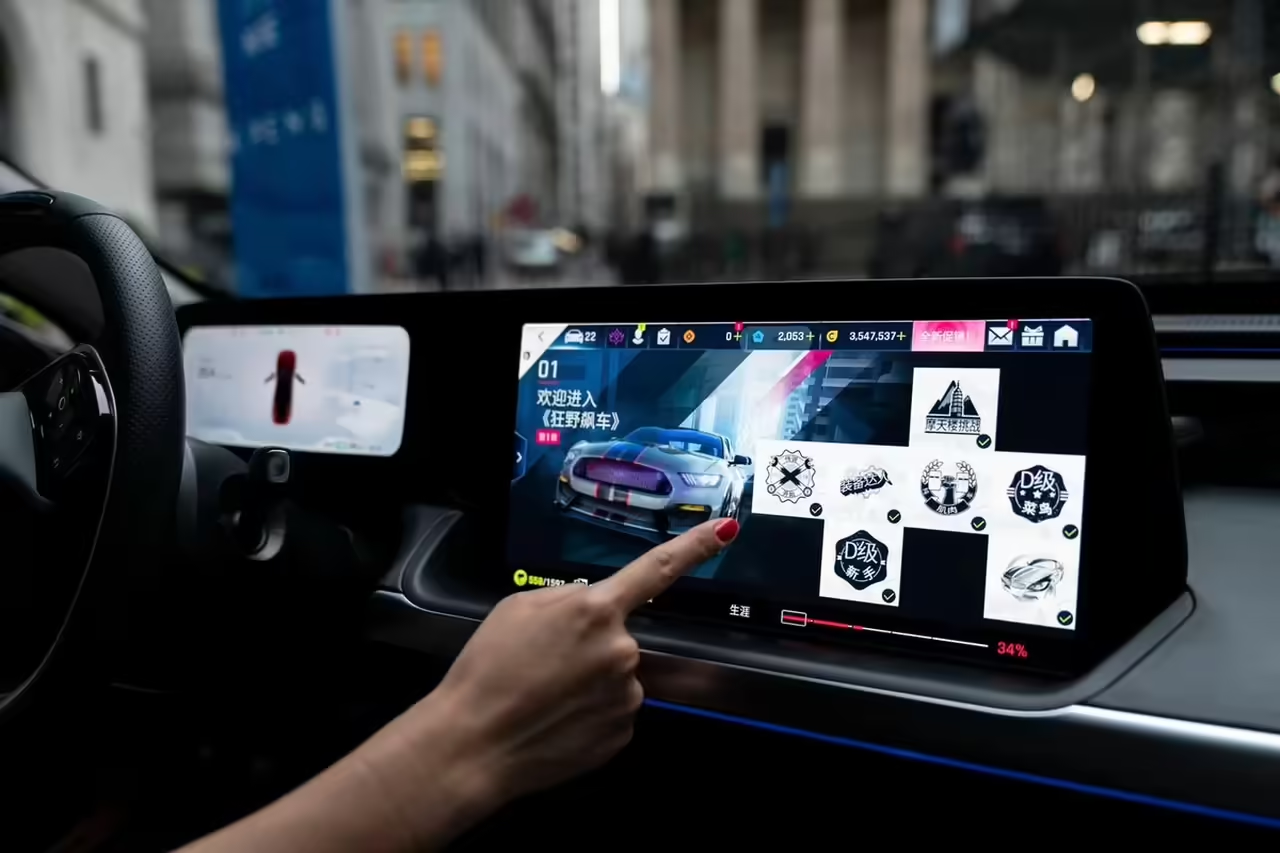
Definition and Characteristics
Simple and inclusive technologies are those designed to be easily accessible and usable by as many people as possible, regardless of their abilities, technical knowledge, or economic resources. These technologies are characterized by being intuitive, low-cost, and adaptable to various contexts and needs.
Main Characteristics:
Accessibility: Must be usable by people with diverse physical and cognitive abilities. This includes clear interfaces, accessibility options like alternative text for images, and compatibility with assistive technologies.
Simplicity: The technology should be easy to understand and use without extensive training. Users should be able to operate the technology with minimal instructions.
Cost-effectiveness: Should be affordable in terms of initial cost and maintenance, enabling broader access, especially in communities with limited resources.
Adaptability: Must be adjustable to different cultural, socioeconomic, and geographical contexts, making them useful in a variety of environments.
Sustainability: These technologies should be durable and environmentally friendly, minimizing waste and the consumption of natural resources.
Importance in the Current Context
In today’s context, the relevance of simple and inclusive technologies has significantly increased due to several factors:
Social Inclusion: Technological accessibility is crucial to closing the digital divide and ensuring that all individuals, regardless of their economic situation or abilities, have access to the benefits of technology. This is especially important in areas such as education, employment, and health.
Economic Development: Accessible and low-cost technologies can drive economic development in underdeveloped communities. By providing tools that improve productivity and education, these technologies can help elevate living standards.
Empowerment of Marginalized Groups: Simple and inclusive technologies enable people with disabilities, older adults, and other marginalized groups to participate more fully in society. This includes access to information, government services, and employment opportunities.
Resilience and Adaptability: In crisis situations, such as natural disasters or pandemics, simple and accessible technologies can be crucial for communication, continuous education, and access to essential services.
Education and Training: Facilitate lifelong learning and training, allowing people of all ages and socioeconomic backgrounds to acquire new skills and knowledge, which is essential in a constantly changing job market.
Social Innovation: Encourage community-level innovation, enabling users to adapt and modify the technology to meet their specific needs. This can lead to creative solutions to local problems.
The Role of Simplicity in Innovation: A Focus on the Essential
In an increasingly complex world, where technology advances rapidly, simplicity might seem like an outdated concept. However, in the realm of innovation, simplicity plays a fundamental, often underestimated role.
Far from being a limitation, simplicity can be a powerful tool for developing innovative solutions that are effective, accessible, and comprehensible for users.
Why is simplicity important in innovation?
Focus on the Essential: Simplicity forces ideas to be distilled to their core, eliminating unnecessary and complex elements that can hinder understanding and adoption of the innovation.
Improves Usability: Simple solutions are more intuitive and easier to use, making them more attractive to a broader audience.
Reduces Costs: Simplicity generally involves more efficient processes and designs, resulting in lower production and maintenance costs.
Increases Flexibility: Simple solutions are more adaptable and scalable, allowing their application in different contexts and needs.
Examples of Simple Technologies that Have Revolutionized Industries:
- The Bicycle: A simple invention that has transformed transportation for centuries.
- The Telephone: Instant communication accessible to all, thanks to an intuitive and easy-to-use design.
- The Internet: Democratization of information access through a simple interface and standardized communication protocols.
- Personal Operating System: Making computing accessible to the general public through a simple and easy-to-navigate graphical interface.
Inclusivity: Accessibility and Diversity
In today’s technological world, inclusivity has become a fundamental principle for the development and implementation of technologies. Technological inclusion ensures that tools and services are designed to be accessible and useful to as many people as possible, regardless of their physical, cognitive, or socioeconomic capabilities.
Definition of Inclusive Technologies
Inclusive technologies are those designed to be accessible, usable, and beneficial to people of all abilities and contexts. This includes:
- Physical Accessibility: Technologies that can be used by people with physical disabilities, such as those compatible with assistive devices, having adaptive interfaces, and offering alternative control options (voice, gestures, etc.).
- Cognitive Accessibility: Tools that consider diversity in cognitive and learning abilities, providing simple, clear, and customizable interfaces, as well as additional support for users with cognitive disabilities.
- Socioeconomic Diversity: Technologies that are affordable and accessible to people with different income levels, including low-cost or free versions.
Benefits of Technological Inclusion in the Business Environment
Market Expansion:
- Larger Customer Base: By designing products accessible to a broader audience, companies can attract more potential customers, including those previously excluded.
- Revenue Diversification: Offering products and services that cater to diverse demographic groups allows companies to diversify their revenue sources and reduce financial risks.
Improved Reputation and Brand:
- Corporate Social Responsibility: Companies that adopt principles of technological inclusion are seen as socially responsible, improving their reputation and attracting consumers and investors interested in ethical business practices.
- Customer Loyalty: Consumers value companies that care about inclusion and accessibility, which can translate into greater loyalty and customer retention.
Innovation and Creativity:
- Diversity in Thought: Technological inclusion fosters a diverse work environment where people from different backgrounds and abilities can contribute unique perspectives, driving innovation.
- More Comprehensive Solutions: Technologies designed to be inclusive tend to be more robust and versatile, considering a wider range of needs and situations.
Regulatory Compliance and Reduced Legal Risks:
- Compliance with Laws and Regulations: Many regions have laws requiring accessibility in technological products and services. Complying with these requirements helps companies avoid legal sanctions and fines.
- Reduced Litigation: Ensuring that products are accessible can reduce the risk of litigation related to discrimination and exclusion.
Increased Productivity:
- More Efficient Tools: Inclusive technologies, which are easy to use and adaptable, can improve the productivity of all employees, not just those with disabilities.
- Inclusive Work Environment: A work environment that values diversity and inclusion tends to be more collaborative and motivating, enhancing overall company performance.
Success Stories: Companies Implementing Simple and Inclusive Technologies
The implementation of simple and inclusive technologies has enabled several companies to stand out not only in terms of profitability and market reach but also in their social impact. Here are case studies of recognized companies that have achieved success through the use of accessible and diverse technologies.
Microsoft: Accessibility in Technology
- Description: Microsoft has been a leader in creating inclusive technologies, focusing on the accessibility of its products and services. The company has developed a wide range of accessibility tools integrated into its Windows operating system and Office productivity suite.
- Results:
- Market Expansion: Microsoft’s accessibility features, such as Narrator, Immersive Reader, and color and contrast customization options, have made its products useful for people with various visual, auditory, and cognitive disabilities.
- Improved Reputation: Microsoft has been globally recognized for its efforts in accessibility, significantly enhancing its reputation as an inclusive and socially responsible company.
- Continuous Innovation: The company has continued to innovate with products like the Xbox Adaptive Controller, designed specifically for gamers with limited mobility.
- Lessons Learned:
- Integrate Accessibility from Design: Including accessibility options from the early stages of product development ensures that the needs of all users are considered from the beginning.
- Collaborate with the Community: Working closely with organizations and users with disabilities helps identify real needs and create more effective solutions.
Google: Universal Design in Digital Products
- Description: Google has implemented a universal design approach in its products and services, such as Android, Google Search, and Google Maps, to ensure they are accessible to a diverse global audience.
- Results:
- Expanded Access: Features like Voice Access and Live Transcribe in Android have made technology more accessible for people with motor and hearing disabilities.
- Global Inclusion: Google Maps has integrated features that indicate accessibility in public places, helping people with reduced mobility plan their trips and movements.
- International Recognition: Google has received numerous awards and recognitions for its efforts in accessibility and inclusive design.
- Lessons Learned:
- Promote Inclusion in All Products: Ensuring that every product and service of the company is designed with accessibility in mind can maximize the positive impact.
- Continuously Update Tools: Accessibility needs can change, so it’s crucial to keep tools updated and adapted to new demands and technologies.
Apple: Innovations in Accessibility
- Description: Apple has integrated cutting-edge accessibility features into its products, such as the iPhone, iPad, and Mac. These features include VoiceOver, a screen reader technology, and voice control options.
- Results:
- User Empowerment: Technologies like VoiceOver have enabled people with visual disabilities to effectively and independently use Apple devices.
- Competitive Advantage: Apple’s dedication to accessibility has strengthened its reputation as a leader in inclusive design, attracting a wide group of loyal consumers.
- Customer Satisfaction: Efforts in accessibility have led to high satisfaction levels among users with disabilities, who find Apple products truly consider their needs.
- Lessons Learned:
- Commit to Accessibility: A strong and continuous commitment to accessibility can significantly differentiate a company in a competitive market.
- Include Innovative Features: Not only meet accessibility standards but also constantly seek innovations that enhance user experience.
Implementation of Simple and Inclusive Technologies
Adopting simple and inclusive technologies requires well-defined strategies and a firm commitment to accessibility and diversity. Here are some strategies for adopting simple technologies and ensuring inclusivity in technological solutions:
Strategies for Adopting Simple Technologies
User-Centered Design:
- User Research: Conduct studies and surveys to understand the needs, capabilities, and limitations of end-users. Involve users in the design process to continuously gather feedback.
- Prototyping and Testing: Create low-fidelity prototypes and conduct usability tests with real users to identify complexity issues and improve the interface.
Minimization of Features:
- Prioritize Essential Functionality: Focus on key features that meet the primary needs of users. Avoid feature overload that may complicate the user experience.
- Iteration and Simplification: Continuously review the product to remove redundant features and simplify complex processes.
Intuitive Interfaces:
- Clean and Clear Design: Use a simple and clear visual design with intuitive iconography and a logical navigation structure.
- Consistency: Maintain consistency in design elements and interaction to facilitate learning and user familiarity.
Education and Support:
- Guides and Tutorials: Provide educational materials such as video tutorials and step-by-step guides to help users understand and use the technology.
- Accessible Technical Support: Offer accessible and responsive technical support to quickly and effectively resolve user doubts and issues.
Ensuring Inclusivity in Technological Solutions
Adoption of Accessibility Standards:
- Compliance with Regulations: Ensure products comply with accessibility standards such as the Web Content Accessibility Guidelines (WCAG).
- Compatibility with Assistive Technologies: Guarantee that products are compatible with assistive technologies like screen readers, screen magnifiers, and alternative input devices.
Inclusive Design Approach:
- Universal Design: Apply universal design principles to create products that are accessible and usable by the widest possible range of people, regardless of their abilities.
- Testing with Diverse Users: Conduct usability testing with people of varying physical and cognitive abilities to identify and address accessibility issues.
Personalization and Adaptability:
- Customization Options: Offer customization options that allow users to adjust the interface and functionality according to their needs and preferences.
- Adaptation to Varied Contexts: Design technologies that can adapt to different cultural, linguistic, and socioeconomic contexts, ensuring their relevance and global utility.
Team Training and Awareness:
- Accessibility Training: Provide regular training to the development team on accessibility and inclusivity topics to ensure everyone understands their importance and how to implement them effectively.
- Inclusive Culture: Foster a corporate culture that values diversity and inclusion, promoting practices and policies that support these principles.
Continuous Feedback:
- Feedback Channels: Establish effective feedback channels so users can provide input on the accessibility and usability of the product.
- Iterative Improvements: Use feedback to make continuous improvements and ensure that technologies remain accessible and useful for all users.
By implementing these strategies, businesses can effectively adopt simple and inclusive technologies that not only meet regulatory requirements but also enhance user experience, expand market reach, and foster innovation through diverse perspectives and needs.







